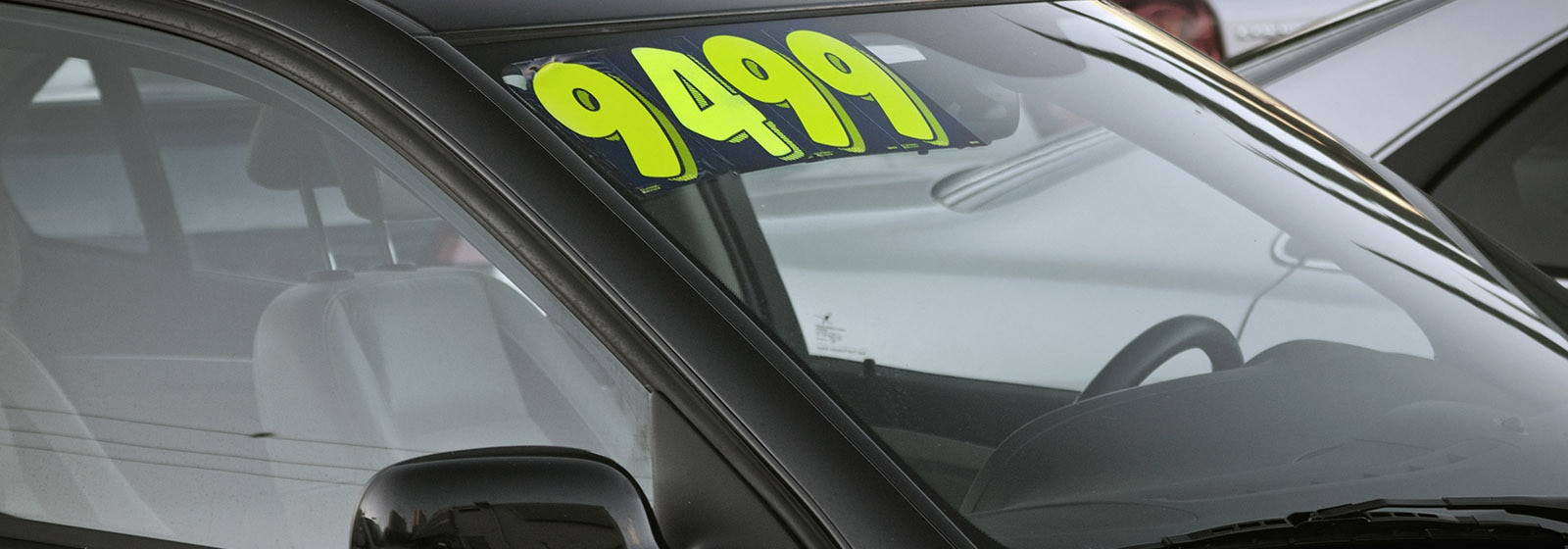How to Make Depreciation Work for You
Learn how to benefit from falling car prices.
 Shutterstock
Shutterstock
If you’re like most buyers, you want your next car to be better than your last—or at least a better fit for your needs. That means different things to different people, obviously, but in general it’s some combination of spending a little more, tacking on a few luxury and convenience features, or even stepping up from used to new. Just one problem: the value of a new car drops dramatically even before the ink is dry on the paperwork.
In the car-buying world, few words generate more feelings of dread and confusion than “depreciation.”
It conjures images of once-pricey cars taking a nose-dive in value after just a few years. While yes, that can happen, it’s only one part of the story. Depreciation is arguably among the most misunderstood and over-emphasized words in the automotive lexicon.
The not-so-simple truth is there are a few ways to turn the tables on the Debbie Downer of car buying, and that’s when you can actually begin to appreciate depreciation.
WHAT’S THE DEAL WITH DEPRECIATION?
As with most urban legends, depreciation inspires horror stories and wild exaggerations. But there is an underlying truth at its core: Cars lose value quickly. That new car smell has more staying power.
When Kelley Blue Book (KBB) calculated its
After those first 36 months, though, that steep rate of decline begins to level out somewhat, and that’s when a window of opportunity opens up.
FIND YOUR CAR’S DEPRECIATION SWEET SPOT, AND IT MAY SURPRISE YOU
How can a 2017 Chevy Impala cost more than a 2017 BMW 320i xDrive?
You guessed it: depreciation.
Initially, the fully loaded Impala costs roughly the same: $35,845* for the V6 LTZ 2LZ trim, versus $35,540* for the entry-level
At the end of the first five years, the BMW holds its value better, which more than offsets a slightly higher cost of service and repairs, according to IntelliChoice. And if that’s when you’re ready to sell, you will have found the depreciation sweet spot.
OR, YOU CAN JUST LET SOMEONE ELSE TAKE THE DEPRECIATION HIT
It’s actually possible to get the vehicle you want AND the deal you want if you look in the right places. Consider cars just coming in off-lease—they’re typically about three years old with relatively low mileage—which means you can have your proverbial cake and eat it, too.
Let’s take a look at an example. For 2019, Jeep’s Wrangler Unlimited Sport starts at $27,895, and its powertrain warranty (which covers the engine and transmission, among other important bits) is good for up to five years or 60,000 miles. If you were to buy one today, you’d lose
THE LONGER YOU PLAN TO OWN YOUR CAR, THE LESS DEPRECIATION TRULY MATTERS
The older a vehicle gets, and thus the lower its value becomes, the slower the depreciation. If you tend to drive the same car for a decade or longer, depreciation may be less of a factor to you than if you’re planning on selling or trading it in after a few years.
After the bulk of the depreciation occurs, other factors like long-term reliability and expected maintenance and repair costs creep into the mix.
So keep that in mind if you’re going to play the depreciation game as a buyer.
For example, a 2019 Lexus LS—which costs around $75,000 new—might seem like an attractive bargain for just under $37,500; it typically loses about
DON’T LET DEPRECIATION SCARE YOU OFF
No one wants to lose a mint watching their car’s value plummet, but the simple fact is it comes with the territory of car ownership. Rather than letting the fear of depreciation paralyze your decision-making process, dig a little deeper and learn how to play the game. Once you understand it and begin paying attention to which vehicles do and do not tend to hold more of their value over time, you can make depreciation work to your advantage.
*Pricing represents the 2017 model year.
Written by humans.
Edited by humans.
 Aaron Miller
Aaron MillerAs a veteran automotive journalist, I have been fortunate enough to drive some of the most desirable cars on the planet and get to know some of the most important people in the industry. Before joining Capital One, I served as the Cars Editor for a major national website, and covered industry news and analysis for well-known automotive-specific sites. I also wrote feature articles and reviews for niche enthusiast websites. I’ve been obsessed with cars since—literally—before I can remember, with my collection of die-cast and slot cars taking center stage during my formative years. Simply put, for me, working isn’t really “work.”
Related articles
View more related articles